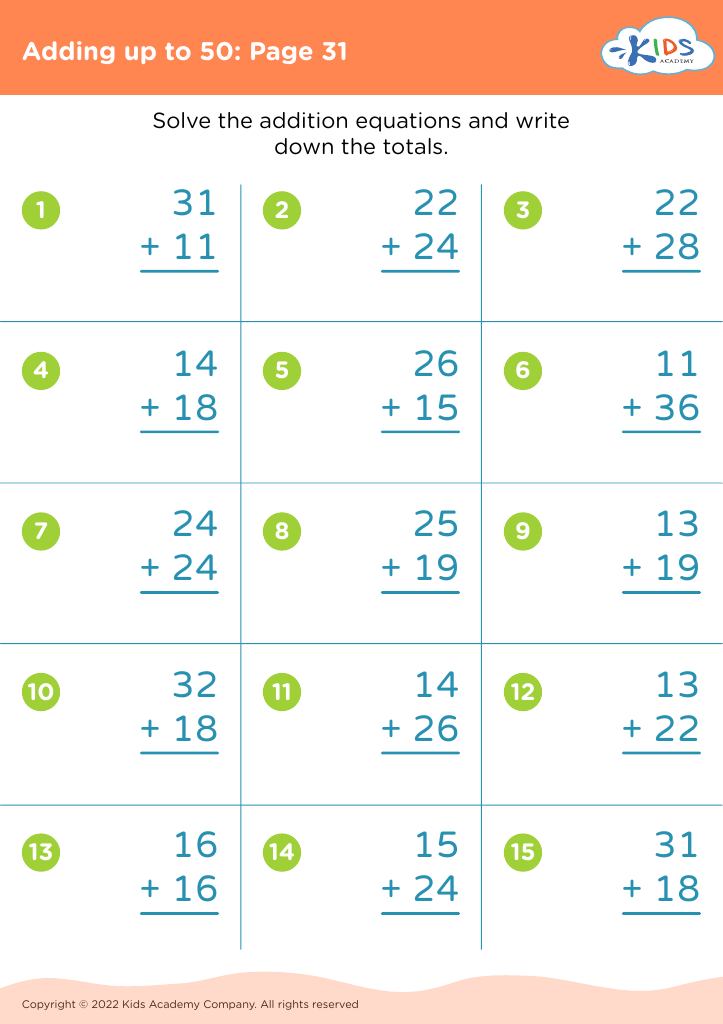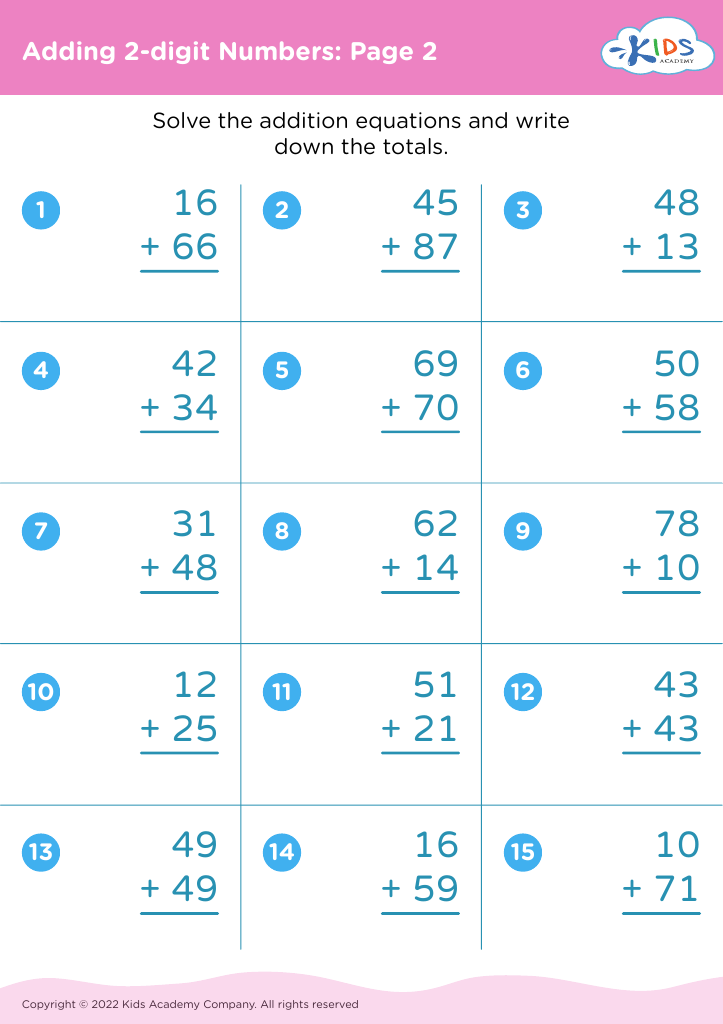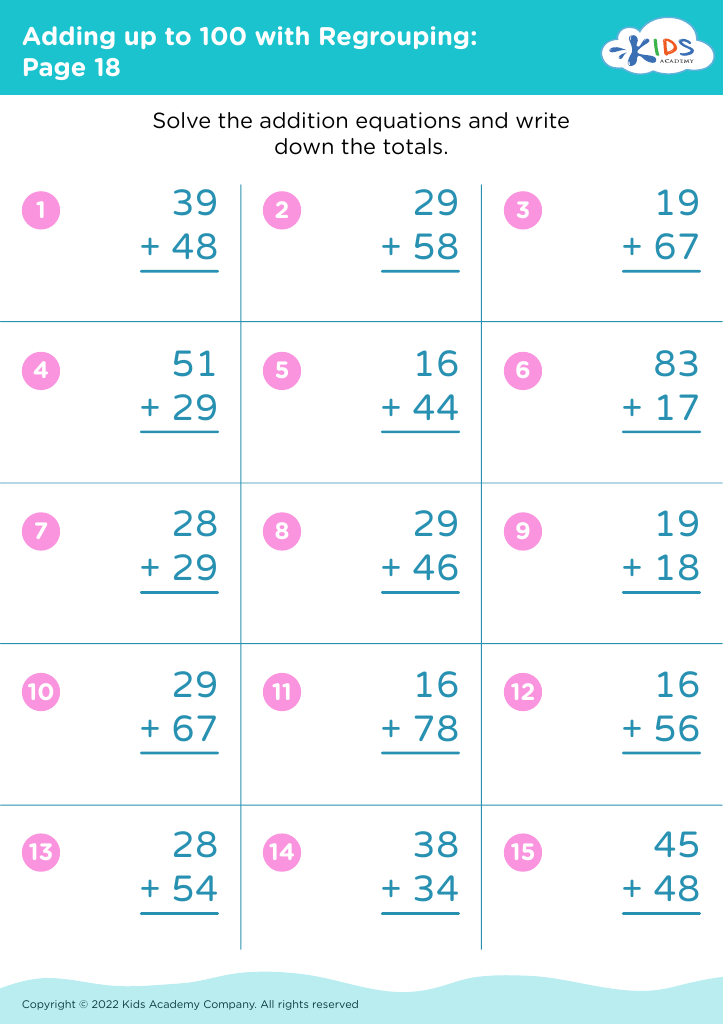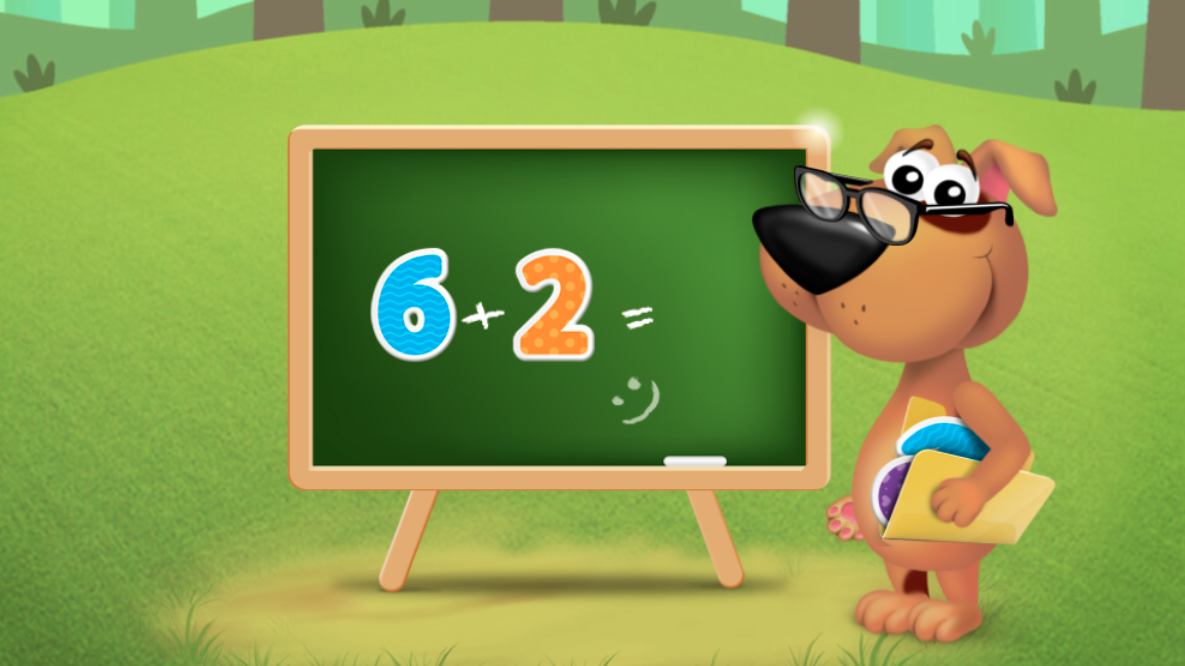Identifying patterns Addition Worksheets for Ages 7-8
3 filtered results
-
From - To
Discover our engaging "Identifying Patterns Addition Worksheets" tailored for children ages 7-8! These worksheets provide a fun and interactive way for young learners to develop their addition skills while identifying numerical patterns. Designed to reinforce essential math concepts, these activities promote critical thinking by encouraging students to recognize sequences and relationships in numbers. Each worksheet features colorful graphics and various exercises that challenge children to solve problems creatively. Perfect for classroom use or at-home practice, these resources aim to build confidence and enhance mathematical proficiency. Unlock the joys of learning through patterns and addition with our expertly crafted worksheets!
Identifying patterns in addition is essential for children aged 7-8, as it lays a foundational understanding necessary for more advanced mathematical concepts. At this age, children are transitioning from concrete operational thinking to a more abstract understanding of mathematics. By recognizing patterns in addition, they can develop confidence and fluency in computations, leading to a more positive attitude toward math.
Patterns help children understand the concepts of number relations and operations. For example, identifying the pattern in adding two even or two odd numbers (resulting in an even number) deepens their comprehension of properties of numbers. This foundational knowledge also enables them to tackle more complex problems, like addition with regrouping, fractions, and even the basics of algebra down the line.
Moreover, recognizing patterns in addition enhances critical thinking and problem-solving skills. It fosters an inquisitive mindset, encouraging students to explore and ask questions about the numbers they encounter. Parents and teachers who prioritize pattern identification in addition can create a supportive learning environment that nurtures curiosity and resilience in math, preparing children not just for tests, but also for practical life skills in mathematics and beyond.




















